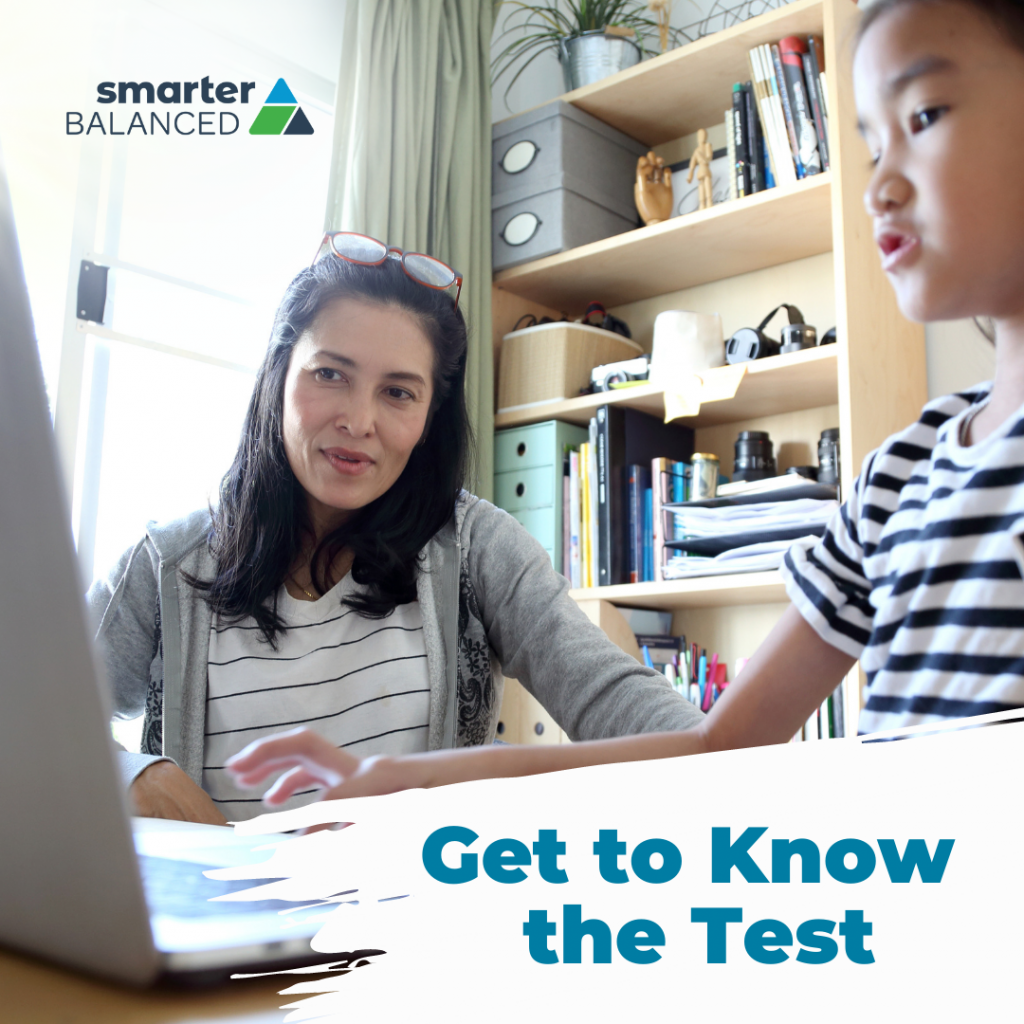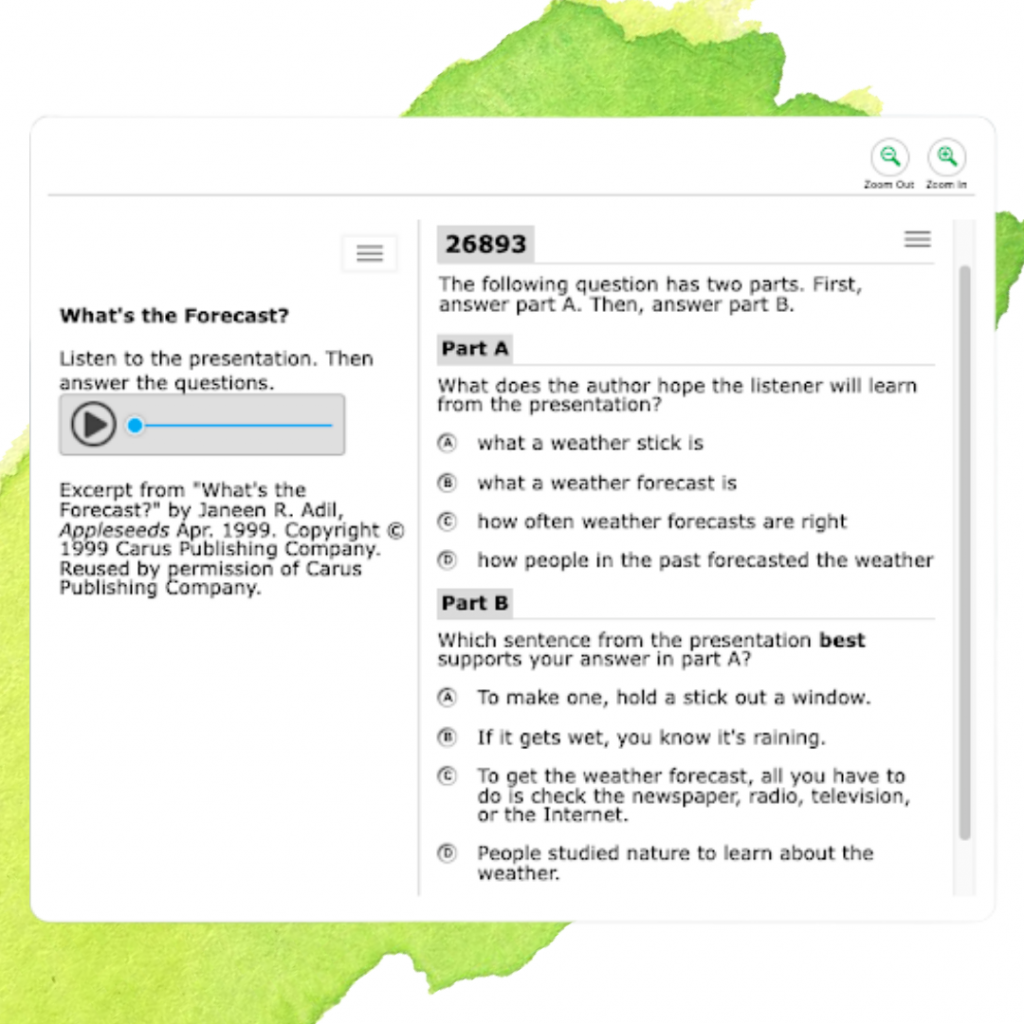Get to Know the Test: Parents and Families Edition

Parents and families can continue to engage in their child’s education and help pave each student’s path toward progress by diving into insightful resources. Whether it’s learning about the tools available to students or the types of content they’re learning, it’s important to have a bigger picture of your child’s education.
A bigger picture includes an opportunity to better understand the Smarter Balanced English language arts/literacy and math tests your child will take toward the end of their school year.
When students participate in end-of-year tests, it helps teachers, parents, and families identify their progress toward college and career readiness. Your child’s participation in state testing helps improve learning and instruction for all students and acts as a progress check for students to show what they know and can do in math and English language arts/literacy.
With a complete picture that includes end-of-year tests and how they work, you can support your child’s learning as they wrap up the school year! Here are two tools you can use to explore the summative test:
State Practice and Training Tests
Your state’s ELA and math practice and training tests allow you to experience what it’s like to take the Smarter Balanced computer adaptive test.
- Practice tests include about 30 questions, giving you insight into the format and structure of the testing platform.
- Training tests allow you to explore different types of questions and how students might make use of the embedded universal tools available during the test.
Sample Items Website

The Sample Items Website is a great resource if you want to quickly try out test questions (also called test items) and explore features without going through a complete test. Test questions are developed with extensive involvement by educators, including test question writing, reviewing for accuracy, and ensuring questions are fair for all test takers.
Each assessment uses a variety of item types to accurately measure what students know and can do. For instance, the item type “Evidence-Based Selected Response” asks students to interpret and use information delivered orally, then select the correct responses for the two-part question.
We hope this short overview gives you better insight into the benefits of your child’s participation in summative assessments and how the Smarter Balanced tests work. If you’re looking for more information, visit the supports for students and families page of our website.
